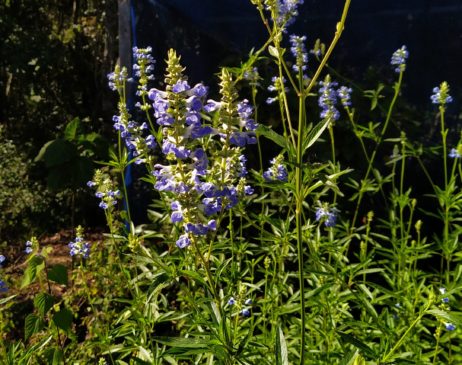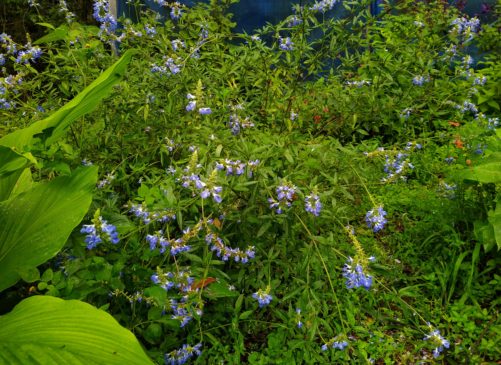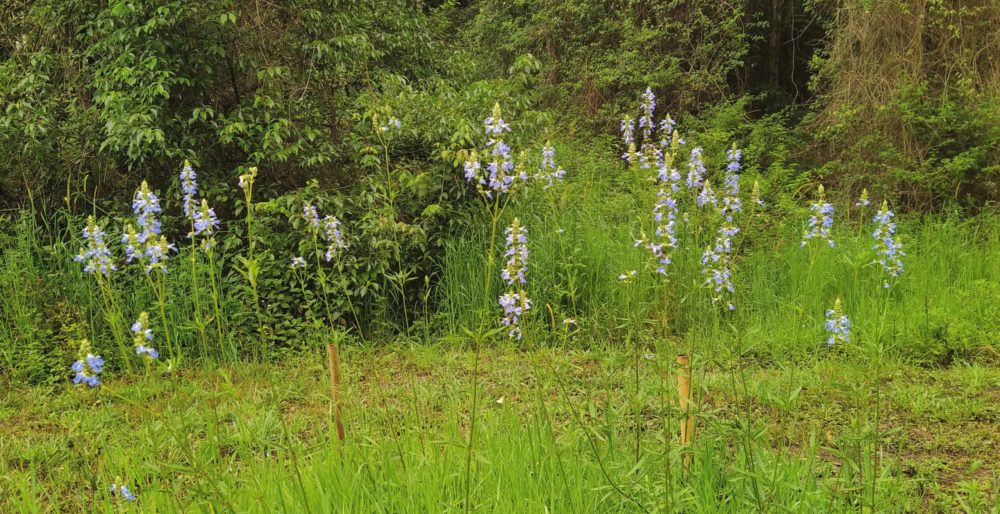Salvia uliginosa and bog sage are the two unattractive names of this pretty plant with lovely pale blue flowers. As both names indicate, it grows naturally in marshy ground, but in gardens it grows well in standard soil. In fact withholding of water can be a strategy to contain it.

I waited a while to get uliginosa, as it is invasive and I wanted to have a spot where that wouldn’t matter. It spreads by underground stems that look and act a bit like couch grass. Unusually for salvias that grow well here, it dies down for Winter. In Spring it takes off as a thick stand of slender vertical shoots, which are capped with flowers through Summer.
The whole plant is reminiscent of Salvia azurea, and I wonder how closely related they are, although uliginosa is from southern South America, and azurea is from North America. The leaves are in pairs at each node, and the nodes bear short stems with smaller leaves, giving the effect of leaf clusters. The main leaves are 60 mm long and 20 mm wide at the base, tapering evenly to a point at the tip. Margins are serrate on the dark green leaves. The petioles are quite long, around 25 mm. Stems can grow to around 500 mm long, but will fall over if unsupported.

The flowers are a lovely pale blue with white landing strips. They are small but borne in conspicuous spikes held high above the foliage. S. uliginosa flowers through Summer and is of course a great attraction to bees.
Propagation would never be a problem, from cuttings or more quickly from runners. A sunny spot in the garden will maximise the flowering. I think it looks great as a row or isolated bed that is seen in profile. Grow it where it can be contained by a physical barrier, a well mowed lawn, or a ditch to keep the runners shaved off. In Autumn here I can maintain its patch (against weeds) by mowing with a sickle to ground level.

